At first, disc golf sounds simple enough. Throw the disc into the basket. No problem.
Until you put the basket 600 feet away. And scatter the way there with trees. And add a bend in the hole, just to dent the confidence a little futher.
There’s a reason disc golf is growing so rapidly. It’s relaxing. It’s inexpensive. There’s a sense of community to it, as anyone from white-haired adults to elementary schoolers can play.
But don’t be fooled. It’s tricky — and, depending on the hole, can be downright hard.
“I feel like a lot of people that I talk to … think it’s just throwing around in a field with frisbees and whatnot,” said Gardiner’s Alic Shorey, one of 72 players who showed up at Skyriders Disc Golf in Fairfield for the Skyriders PDGA Open. “It’s a lot tougher than people think it is.”
“I feel like a lot of people have thrown frisbees or played Ultimate and they are like ‘Oh yeah, disc golf, I can do that no problem,’ ” said Nicole Russell, a disc golf professional from New Gloucester. “And then they get out on the course and it’s a lot more difficult.”
So much of disc golf mimics the golf on which it’s based — or, “ball golf,” as disc golfers often refer to it. Like golf, the objective is to get the disc to the target in as few attempts as possible. In both, there are pars, birdies and bogeys. In both, there are drives, tee areas and putts.
The key difference, though, is that in golf, you are your enemy. The course, with its wide fairways and large greens, isn’t out to hurt you as long as your swing is in order.
In disc golf, though, the course wants to take you down.
“Golf is maybe slightly more mental where you’re competing with yourself,” said Lewiston’s Jamie White, a pro and the event’s organizer. “(In) disc golf maybe you’re fighting the course. Just getting bad kicks, dodging trees, getting lucky, especially in the woods.”
Those daunting layouts are at most disc golf courses, and Skyriders isn’t an exception. On one of the toughest holes on the course, the 632-foot ninth (a par 5 normally, but a par 4 for tournament play), players are required to sling a drive over 300 feet toward the straight-ahead basket, though thick tree trunks fill the fairway and force the shots to thread needles that are only a few feet wide.
“Every course that I play, there’s always five or six holes where you’re like ‘What are we doing? Why would you put a basket like that?’ ” Lewiston pro Josh Seeley said. “There are a lot of things to take into account. … There’s a lot per hole, and you’ve got to do that 18 times. You don’t just step up and say ‘I’m going to chuck it and get as close as I can.’ ”
The par-4, 571-foot 18th hole is shorter but narrower, with more trees standing exactly where a perfect throw would seem to fly. The par-3, 279-foot second hole is a dogleg left that forces players looking to score to slice their drives sharply right to left. The par-3, 437-foot fourth demands a drive through a corridor of trees, with canopies hanging both high and low. One player, Matt Burnette, sailed a drive directly through the narrow opening — only to see the disc smack into a trunk on the other side.
Even a good throw can pay the price.
“You definitely have to know what you’re doing out here,” Shorey said. “It’s more about placement than anything. There’s a lot of strategy that people don’t understand.”
This isn’t every course. Some are easier and more open, and ideal for beginners to learn the game. But at a course like this, and in a competitive event like this, the ways to beat the course are two-fold. One is equipment; Russell said she carries a bag with 20 discs, from drivers that fly far to putters that fly straight, each one with its own unique flight pattern and purpose.
“A lot of us have spent a long time building our bags and kind of figuring out what works for us,” she said. “What shots we can throw and what shots are challenges, and kind of building our bags to fit our needs and our styles of play.”
The other method is time. Players scoring under par are playing every weekend, playing in leagues, putting in their backyards, and spending hours upon hours honing their games.
“After (work) … I’ll bring a bag full of discs out there and just throw into the open fields afterward, just to see the reactions of the flights and the wind and stuff like that,” said Seeley, who works at a course in Sabattus. “You get what you put into it.”
Still, the course can get the best of even the best. Even pros hit branches they didn’t even see, nick the trunk they were counting on missing or get bounces into thick bushes dozens of feet away. It’s another similarity to golf — a good round can melt down with one bad hole.
“It gets to you,” White said. “But you’ve just got to manage it. You’ve got to manage your mistakes.”
One of White’s playing partners, Jordan Ross, summed it up best.
“I keep saying that. ‘I’m done,’ ” he said. “Then I’m like ‘All right, I’ll see you tomorrow.”
Send questions/comments to the editors.


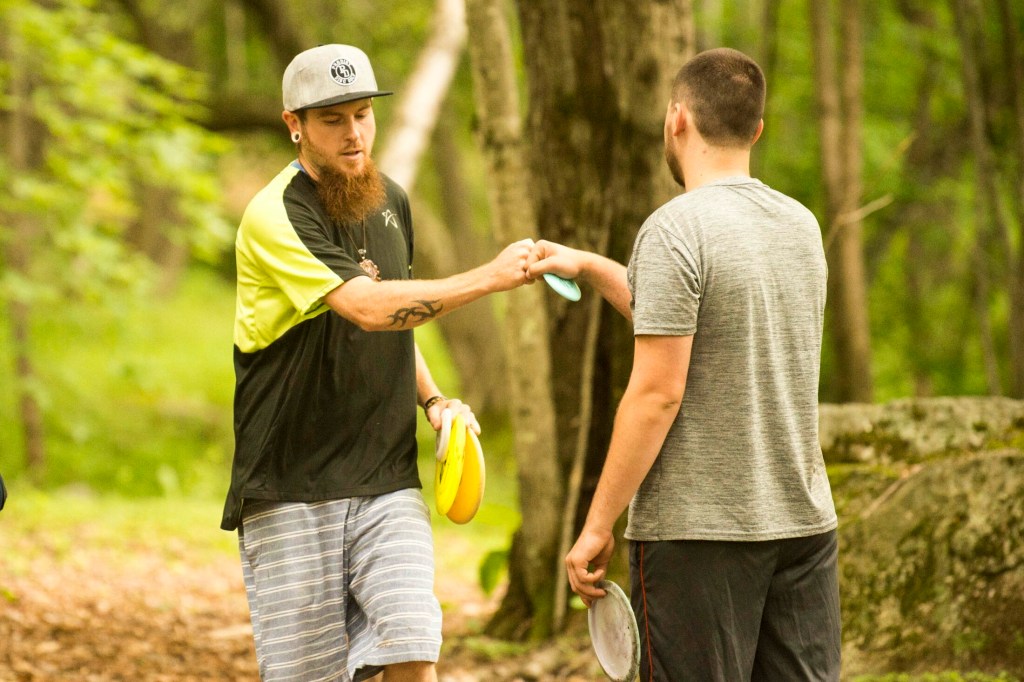
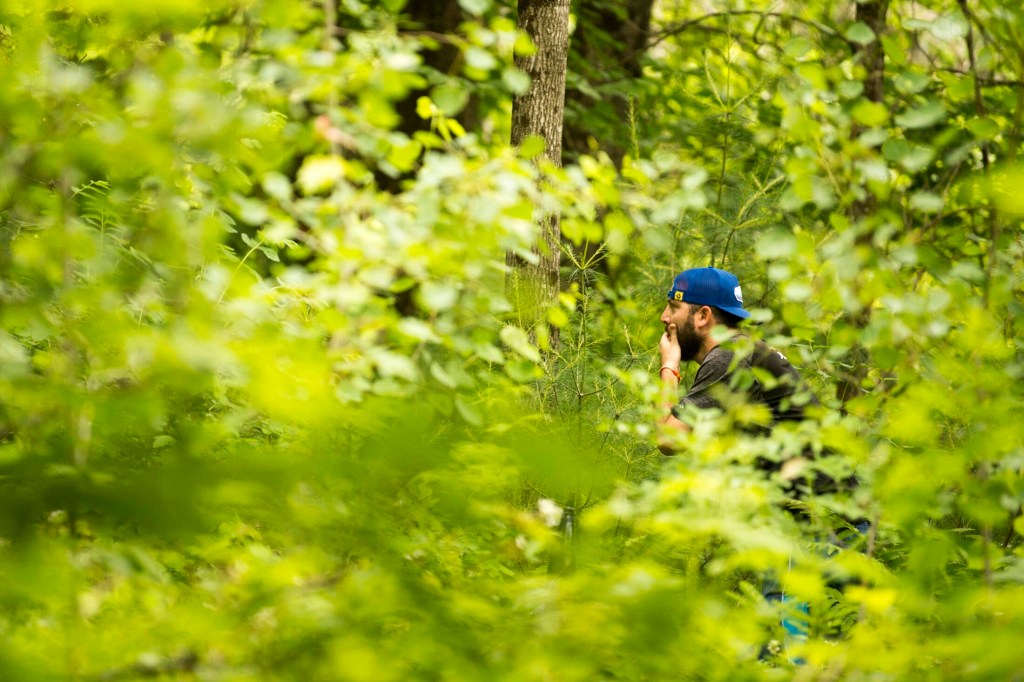
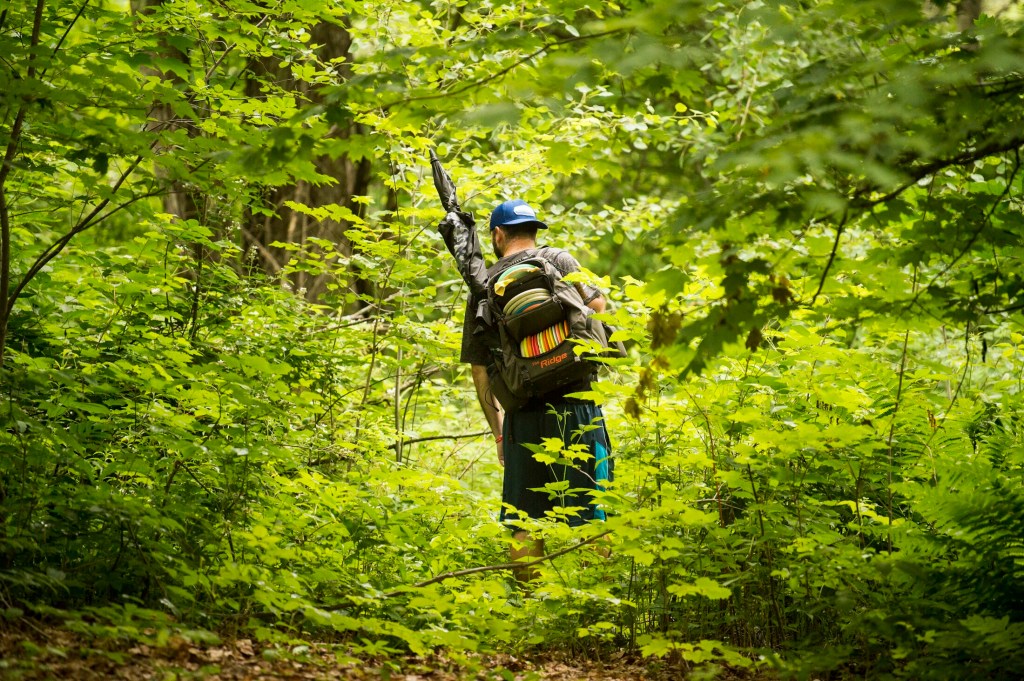
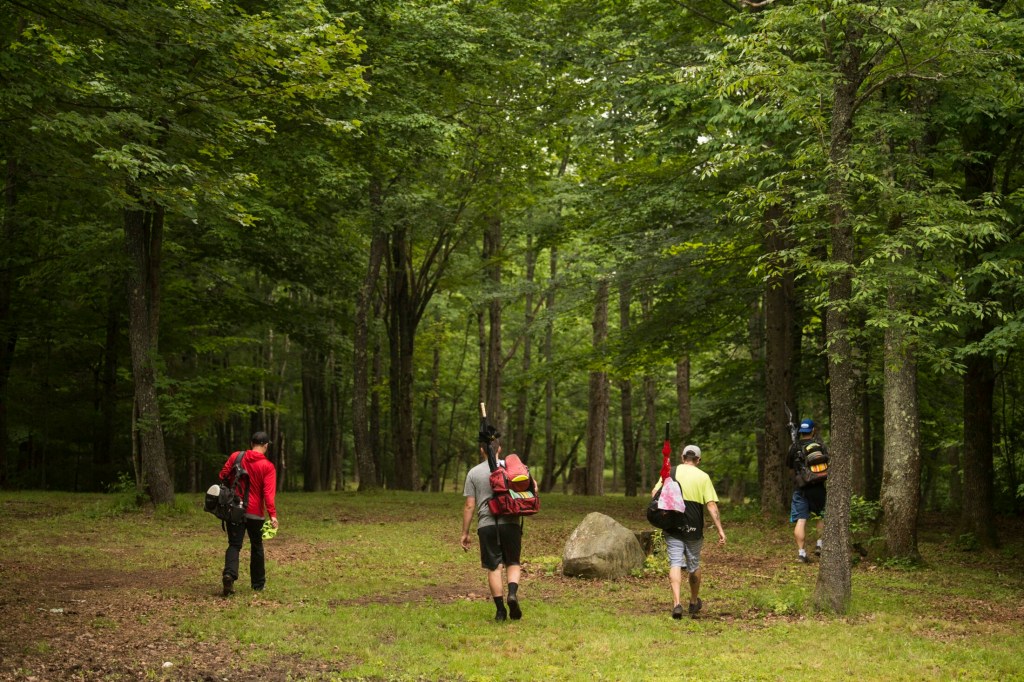
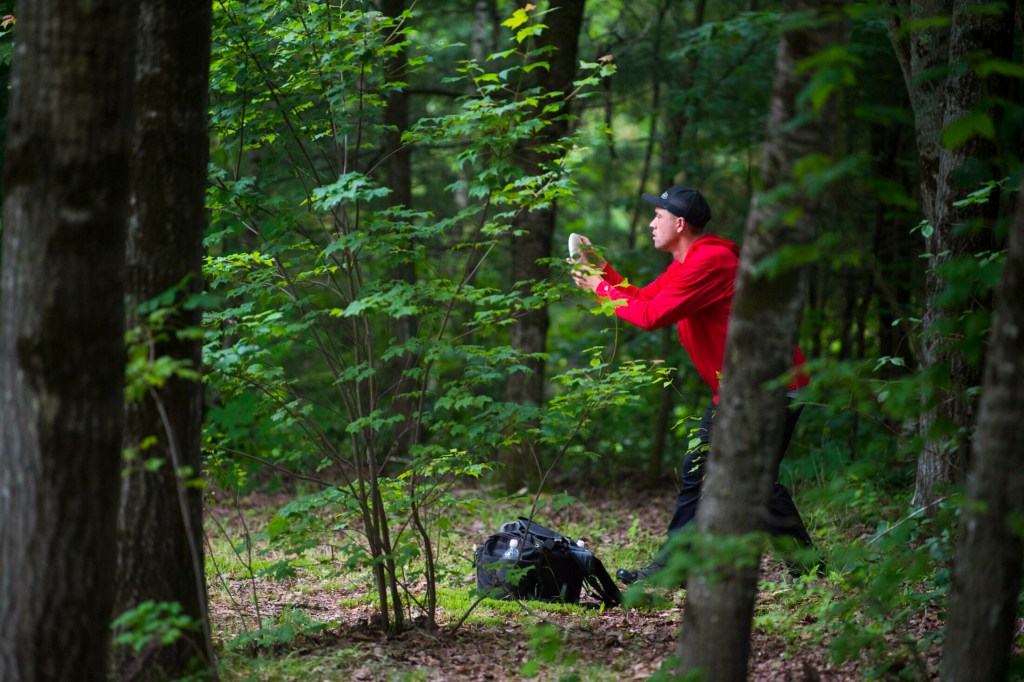
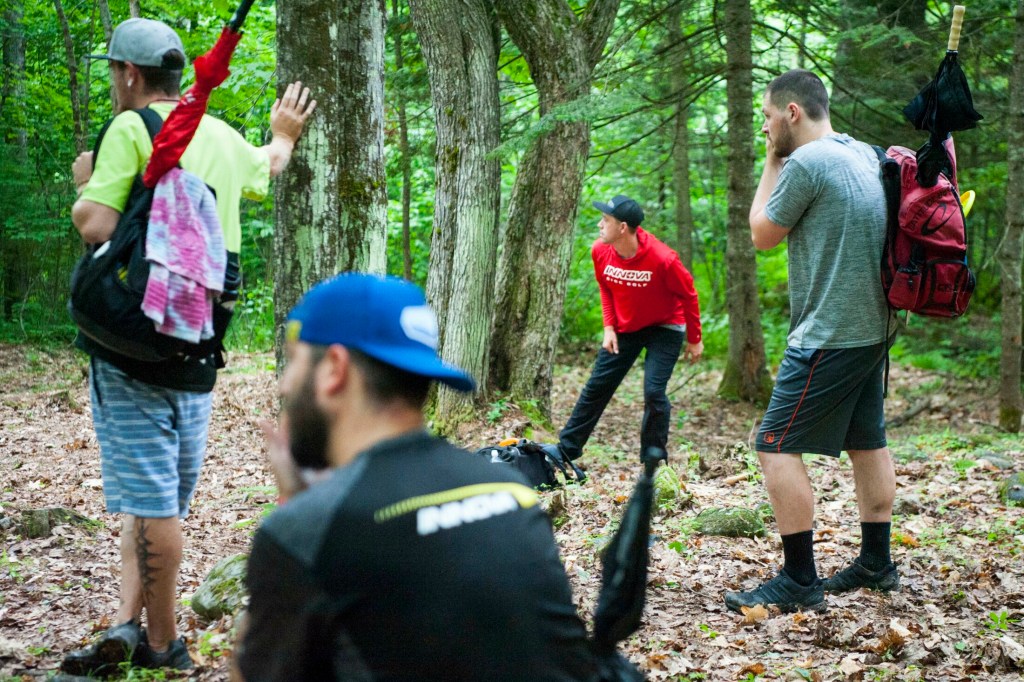
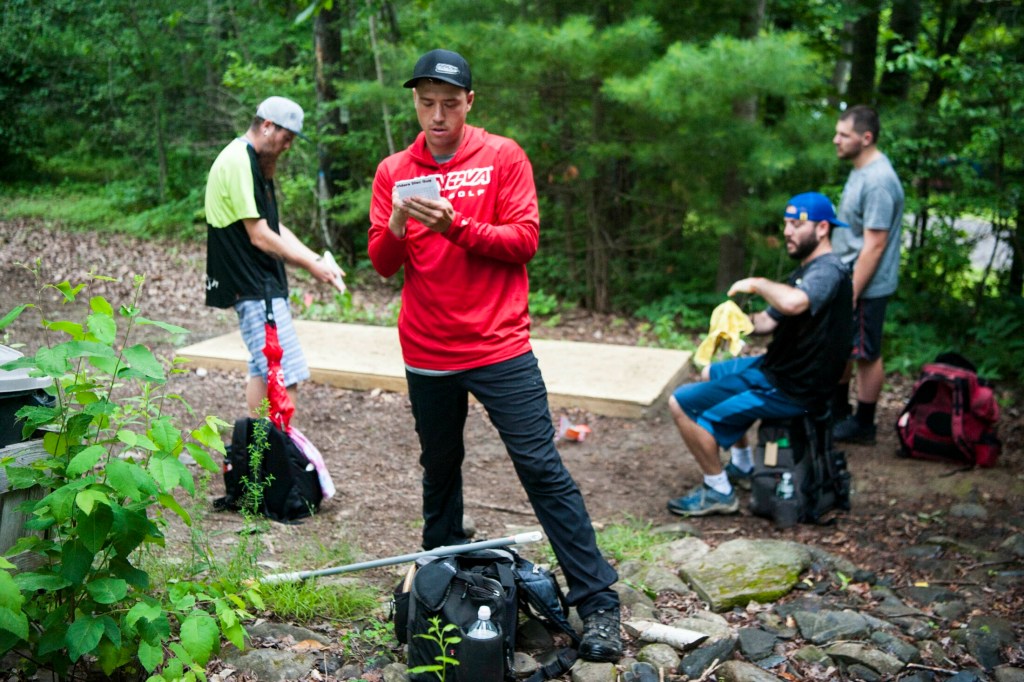
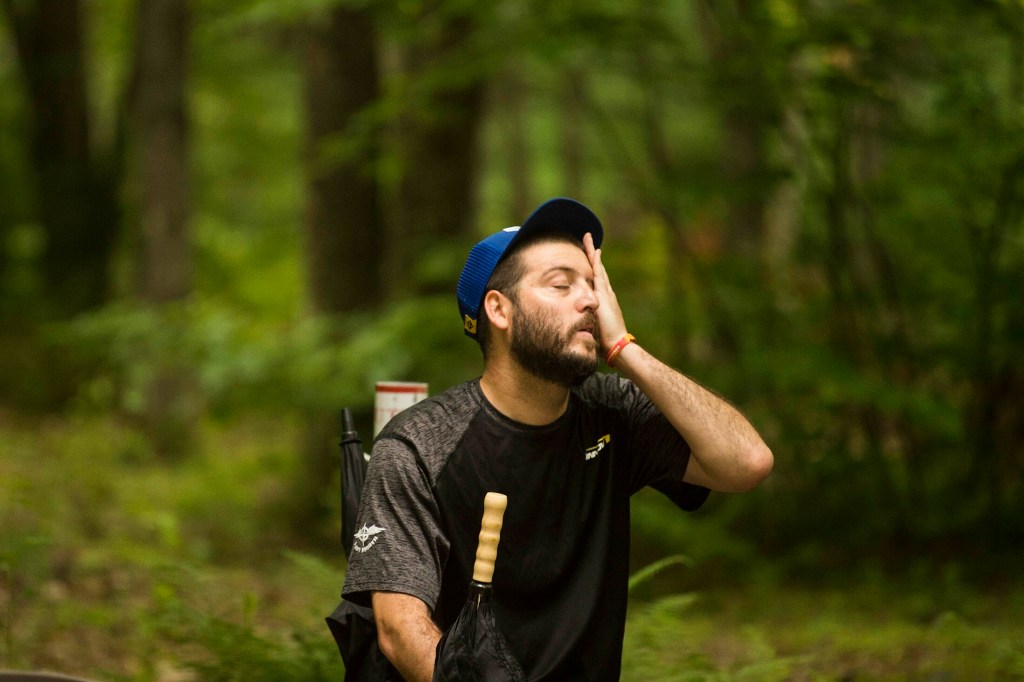

Success. Please wait for the page to reload. If the page does not reload within 5 seconds, please refresh the page.
Enter your email and password to access comments.
Hi, to comment on stories you must . This profile is in addition to your subscription and website login.
Already have a commenting profile? .
Invalid username/password.
Please check your email to confirm and complete your registration.
Only subscribers are eligible to post comments. Please subscribe or login first for digital access. Here’s why.
Use the form below to reset your password. When you've submitted your account email, we will send an email with a reset code.